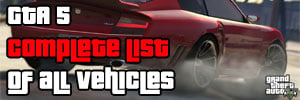Easy way to fix setups - Guide for NASCAR Dirt to Daytona
- Cheats |
- Unlockables |
- Hints |
- Easter Eggs |
- Glitches |
- Guides
Scroll down to read our guide named "Easy way to fix setups" for NASCAR Dirt to Daytona on PlayStation 2 (PS2), or click the above links for more cheats.

Nascar Heat Setup Guide. Tire Pressure Lower tire pressures result in a more forgiving car, and result in higher tire temperatures. Higher pressures allow higher top speeds with less temperature buildup. The recommended pressure will keep the middle (M) temperature of the tires near the average of the inside (I) and outside (O) temperatures. Going higher than recommended can result in more speed at a high- speed track, but the loss in grip can hurt at slower tracks. Settings Raise R/F Loosens car off the corner. Lower R/F Tightens car up Raise R/R Tighter into corner looser off Lower R/R Looser on short runs, as heat builds tightens up. (Think of those long runs) Raise L/F Tightens car up into and off the corner. Lower L/F Looser off the corners. Raise L/R Looser off the corners but tighter in the middle. Lower L/R Looser at start but tightens up on long runs. Shock Bump At the front, a lower number (softer shock compression) loosens the car during the transition to braking, and at the rear, softer shock compression tightens the car during the transition to throttle. Higher numbers (stiffer shock compression) give quicker reactions during these transitions, and the opposite effects. Shock Rebound At the front, a lower number (softer shock rebound) loosens the car during the transition to throttle, and at the rear, softer shock rebound tightens the car during the transition to braking. Higher numbers (stiffer shock rebound) give quicker reactions during the transitions, and the opposite effects. Shocks General Raise R/F Tighter off the corner. Lower R/F Looser off the corner. Raise R/R Looser from the middle and off the corner. Lower R/R Tighter from the middle and off the corner. Raise L/F Also tighter from the middle off. Lower L/F Looser into corners if done in combination with raising r/r. Raise L/R Looser in and off corner. Lower L/R Tightens car up off corners. Note: As a rule I start with Bump. I have found this to have the best effect with the above settings. Springs Softer front springs usually loosen the car (turns better), while softer rear springs tighten it (less likely to spin). Use the softest springs you can without letting the car scrape the ground. If the car rolls too much, stiffen the sway bars. Settings (partial) Raise R/R Loosens car into corners. Lower R/R Tightens car off corner. Raise L/R Tightens car off corner. Lower L/R Loosens car in the middle to off corner. Camber Some positive left side and negative right side camber will help the car turn left. Too much camber will reduce grip and increase tire wear. Tire temperatures on the edge of the tire leaning into the turn (outside -O- on left, inside -I- on right) should be 5 to 10 degrees hotter than the other edge. Negative equal cambers on both sides are usually best on a road coarse, with inside temperatures 5 to 10 degrees hotter than outside. Front Brake Bias If the car doesn't turn well under braking, decrease the front brake bias. If it wants to spin under braking, increase the front brake bias. Go with the lowest front bias you can control. Front Sway Bar Stiffening the front sway bar (larger diameter) tightens the car and reduces body roll when cornering, which can give better control over the tire camber during cornering. Too stiff a bar can lift a front wheel off the track when cornering. Rear Sway Bar Stiffening the rear sway bar (larger diameter) loosens the car and reduces body roll when cornering. Final Gear Ratio The final gear ratio is used to adjust all four gears together. A smaller ratio allows for higher top speeds, but produces less torque at the rear wheels, so it will take longer to reach top speed. Transmission gear ratios Allows each gear to be individually adjusted. A smaller ratio allows for higher top speeds, but produces less torque at the rear wheels, so it takes longer to reach top speed. DON'T FORGET, once you set the individual gear ratio, it will act accordingly to a change in the final gear ratio. Grill Tape More tape reduces air drag and increases front down force, but can cause engine overheating. Spoiler Less spoiler reduces air drag and rear down force, giving higher top speeds and a looser car. A setting of 70% is mandated at the super-speedways. Front Weight Bias Shifting weight to the front (a higher front bias) can help the car turn in better, but may give more mid-corner push. Shifting weight back can stabilize the car at turn entry, but may loosen in mid-corner. Left Weight Bias On an oval, use the maximum left weight allowed. On road courses, it's usually best to keep the weight equal on the left and right sides. Wedge Less wedge will loosen the car, allowing it to turn better. More wedge tightens the car, and can help in putting the power down. On a road course, use 50% wedge to keep the car from pulling to the left or right under power.



